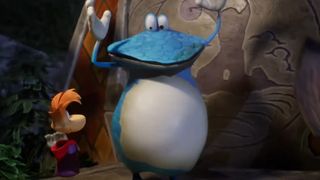6 amazing examples of matte painting
Creating realistic and dramatic matte paintings can be challenging. Here some of the best artists in the business share their work, advice and insights.
Like any other artistic skill, becoming a matte painter takes dedication, talent and experience. Here, some of the best artists in the business about talk about their work and provide insights into the artform.
01. Alex Alvarez
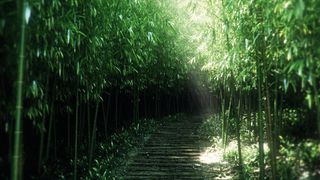
Alex Alvarez, founder and president of Gnomon, created this Bamboo Path piece using Maya and Onyx Bamboo. "As I built my library of trees, I spent some time with the Onyx Bamboo app creating a variety of bamboo styles," reveals Alvarez. The beautiful image on these pages is the result of Alex's experiments, and he says that it was a very quick scene to assemble over the course of a day.
"I started with a poly plane, increased divisions and sculpted in Maya with the Sculpt Geometry tool," he says. "I then created a wood plank, animated it along a motion path, then used the Anim Snapshot tool to create the stepped path. I then slightly randomised the rotations of the planks using a script. All the plants and trees were placed with the Instancer."
02. Vladimir Chopine
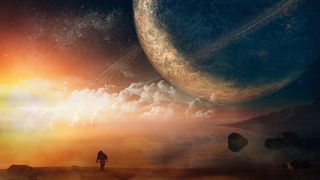
This image, Distant Shores, was a book cover project, created by artist Vladimir Chopine, that started as an experiment in how far he felt he could push the planets in Vue. "Since the sky formations would rule the scene, I studied images of night skies and planetary rings," he says. "I developed the distant starscape in Filter Forge and Photoshop, then brought it into Vue as a giant planet, to become the backdrop to everything else in the render. Then I used Vue's planet tools more conventionally to add the obvious planet."
Chopine explains how the rest of the Vue scene developed normally - a simple co-star to the sky - which got the image about halfway there. The rest of the work was carried out in Photoshop: "The planet got its rings and I overlaid a better reflection on the render's rather weak one. I added haze and subtle god rays and so on, then colour-corrected in Filter Forge. It's details like these that add a sense of wonder, pushing an image from 'nice' to 'stunning'," he adds.
03. Conrad Allen
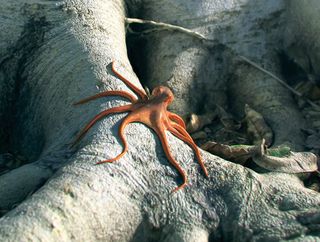
This Squidward piece by environment artist Conrad Allen was put together using Vue and ZBrush. "While I recognise it's not a squid sitting on the tree, the name was chosen for a bit of fun," says Conrad. "The original image (just the tree) looked a bit boring; like a well-lit, but still boring, photograph. This is the power of photogrammetry."
The process has been around for a while, but has recently become more accessible. The entire process took Conrad less than two hours, starting with photographing the site, processing the photos, and then creating a scene for lighting and rendering.
Get the Creative Bloq Newsletter
Daily design news, reviews, how-tos and more, as picked by the editors.
"I started looking into this process, as I had an upcoming job where I needed to recreate historical sites for a documentary," explains Conrad. "Originally I was flying out to the sites to take reference photography and back to the office to model them. Photomapping the site was the clear option, once I saw the quality and speed I managed with this image."
04. Milan Schere
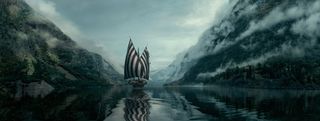
"Visual storytelling has always been at the core of what I do," says Milan Schere. "As a matte painter and filmmaker, I aim to create worlds that are equally fantastical and believable."
The Wing and Fire shot is from Schere’s personal short Return of the Dragon Queen, a story about the metamorphosis of dragons through their interaction with humans. "I used a mixture of photographic elements and brush work to create it," he explains. "My painting technique relies heavily on pressure sensitivity, wherein the harder I press the more opaque my stroke becomes. To get the feel of my matte paintings right, I always try to use my own images."
Never having been to Scandinavia, Schere says he was kindly granted permission by Dominic Remane and Sean Mills to use some of their photographic reference work within this personal piece. The 3D ship model is courtesy of Schere's friend Alfredo Octavio Arango.
"The end result is this styleframe with the now standard 2.40:1 crop," he comments. "I generally start out with a 16:9 aspect ratio and use a bounding box to help me keep all the important information within the final output framing."
05. Tim Spanjer
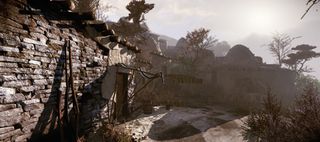
Tim Spanjer is the lead environment artist for a simulation and training company, where he focuses on creating environments that reflect real-world locations. "This work covers environment modelling, asset creation, terrain painting, vegetation painting and level design," he says.
This extraordinary Mountainside Village project was created for military training purposes and is a fully interactive real-time environment running in CryEngine.
"From the buildings and terrain to the rocks and other features, this environment was designed to mimic a specific region of Afghanistan," Spanjer reveals. "These details provide a better sense of immersion and realism for the end user. Environmental effects such as fog, blowing dust and wind-blown plants further enhance the level of realism."
06. David Luong
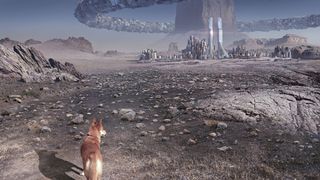
Senior cinematic artist at Blizzard Entertainment, David Luong has been working in the VFX industry for over eight years. His work draws on his experience of movie production and game cinematic creation.
Many matte paintings feature people in the shots, but Luong thinks we could use animals more in visual effects: "I wanted to do one starring my beloved dog, Xena," he says. "She will be at the front of the frame, looking out to discover a futuristic alien city ruled over by a circular city high in the sky," he says.
"The circular city-ship orbits a monolithic mountain that pierces up through the horizon, drawing on an unknown energy. The aliens seem to have populated their own city, perhaps by experimenting with how humans live and then cultivating it in a remote area of this deserted planet. Xena observes from a safe distance, but some drones fly by her – luckily she goes unnoticed."
"I wanted to generate an alien-looking landscape but also integrate it into the plate so the original still has some resemblance in the final," he explains. "The cityscape and the circle city present a great opportunity to use Greyscalegorilla's City Kit [city-building software] to produce the final look. This matte painting is a part of a fully animated shot that was matchmoved and composited using Nuke."
This article originally appeared in 3D World magazine issue 176.
Like this? Read these!
- The best 3D movies to look forward to in 2014
- Inspiring examples of 3D art
- Top free 3D models

Thank you for reading 5 articles this month* Join now for unlimited access
Enjoy your first month for just £1 / $1 / €1
*Read 5 free articles per month without a subscription

Join now for unlimited access
Try first month for just £1 / $1 / €1
The Creative Bloq team is made up of a group of design fans, and has changed and evolved since Creative Bloq began back in 2012. The current website team consists of eight full-time members of staff: Editor Georgia Coggan, Deputy Editor Rosie Hilder, Ecommerce Editor Beren Neale, Senior News Editor Daniel Piper, Editor, Digital Art and 3D Ian Dean, Tech Reviews Editor Erlingur Einarsson and Ecommerce Writer Beth Nicholls and Staff Writer Natalie Fear, as well as a roster of freelancers from around the world. The 3D World and ImagineFX magazine teams also pitch in, ensuring that content from 3D World and ImagineFX is represented on Creative Bloq.
Related articles
-
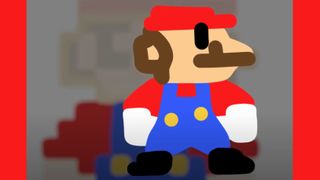
-
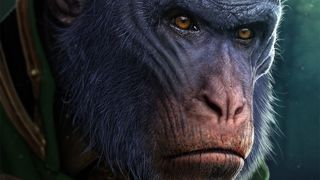
-
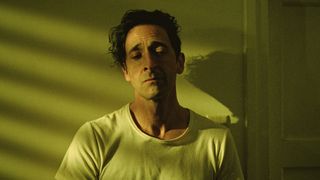
-
